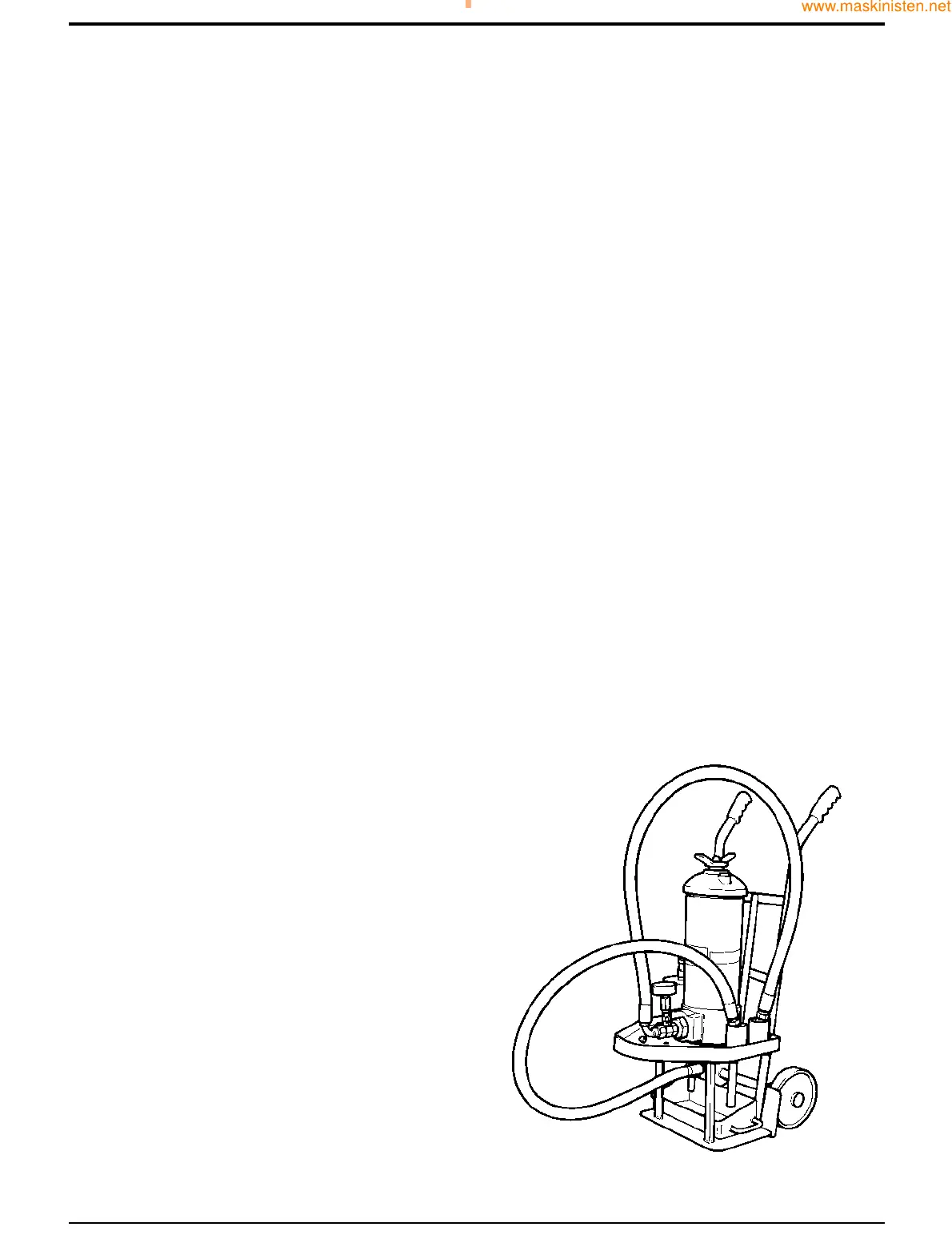20 - 1
Hydraulic Contamination
Hydraulic Fluid Quality
Construction machinery uses a large volume of fluid in the
hydraulic system for power transmission, equipment
lubrication, rust prevention and sealing.
According to a survey conducted by a pump manufacturer,
seventy per cent of the causes of problems in hydraulic
equipment were attributable to inadequate maintenance of
the quality of the hydraulic fluid.
Therefore, it is obvious that control of the quality of the
hydraulic fluid helps prevent hydraulic equipment problems
and greatly improves safety and reliability. Furthermore from
an economic angle it extends the life of the hydraulic fluid if
quality is maintained.
Effects of Contamination
Once inside the system, hydraulic circuit contaminants
greatly effect the performance and life of hydraulic
equipment. For example, contaminants in a hydraulic pump
develop internal wear to cause internal leakage and hence
lower discharges. Wear particles generated will circulate
with the hydraulic fluid to cause further deterioration in the
performance of this and other equipment.
Contaminants also enter principal sliding sections of the
equipment causing temporary malfunction, scuffing, sticking
and leakage and can lead to major problems.
The main contaminants can be classified as follows:-
1 Solid Particles - sand, fibres, metallic particles,
welding scale, sealing materials and wear particles etc.
2 Liquid - usually water and incompatible oils and
greases.
3 Gases - Air, sulphur dioxide etc. which can create
corrosive compounds if dissolved in the fluid.
These contaminants can appear during manufacture,
assembly and operation.
Cleaning Operation
The purpose of cleaning oil is to remove contaminants of all
types and sludge by filtering hydraulic fluid through a
cleaning unit, as illustrated or similar. General Bulletin 011
also refers.
Procedure
Connect the cleaning unit in place of the hydraulic filter and
run the system for sufficient time to pump all the hydraulic
fluid through the unit. Disconnect the cleaning unit and
reconnect the filter. Top up the system with clean hydraulic
fluid as required.
Contaminant Standards
Dirt that damages your system is in many cases too small to
be seen with the eye. The particle size is measured in
microns.
1 micron= 0.001 mm (0.0000394 in)
Listed below are a few typical comparisons:-
Red Blood Cell = 8 microns (0.008 mm, 0.000315 in)
Human Hair = 70 microns (0.07 mm, 0.00275 in)
Grain of Salt = 100 microns (0.1 mm, 0.00394 in)
Smallest particle visible to the naked eye is 40 microns
(0.00157) approximately.
Standards will often be quoted to ISO (International
Standards Organisation) for which literature can be
obtained.
Filters
The filter assembly fitted to all product ranges is designed to
filter all the contamination that is generated through use to
the required level of cleanliness. The filter must be serviced
to the requirements of the machine Service Schedules.
To ensure optimum performance and reliability it is
important that the machines hydraulic system is serviced
periodicaly in accordance with the manufacturers
requirements. For service schedules refer to Section 3
Routine Maintenance -
Section E Hydraulics
9803/7130
Section E
20 - 1
Issue 1
Service Procedures
S168050

